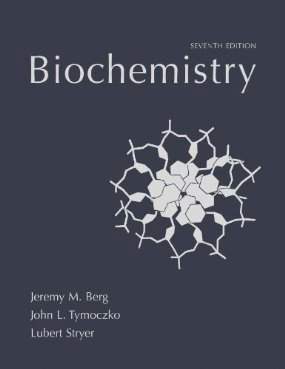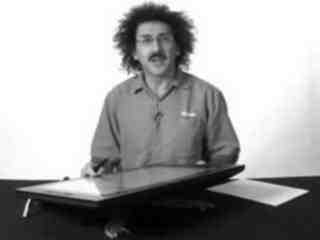
This is a quick preview of the lesson. For full access, please Log In or Sign up.
For more information, please see full course syllabus of Biochemistry
For more information, please see full course syllabus of Biochemistry
Biochemistry Aqueous Solutions & Concentration
Lecture Description
Most body chemistry takes place in aqueous solutions, where a solid, liquid, or gaseous solute is dissolved in water. Covalent compounds dissolve as whole molecules. When ionic compounds (salts) dissolve, they break apart into their component ions and will conduct electricity. The concentration of solute can be expressed in terms of Molarity (moles of solute per liter of total solution), percent by mass (%m/m) (grams of solute over grams of total solution divided by 100), molality, percent by volume, and mole fraction. This lecture also includes several examples of how to calculate the concentrations of solutions of sugar, salts, and a chiral compound called malic acid.
Bookmark & Share
Embed
Share this knowledge with your friends!
Copy & Paste this embed code into your website’s HTML
Please ensure that your website editor is in text mode when you paste the code.(In Wordpress, the mode button is on the top right corner.)
×
- - Allow users to view the embedded video in full-size.
Next Lecture
Previous Lecture










































 Answer Engine
Answer Engine





0 answers
Post by Mithil Krishnan on August 24, 2022
should i know general chemistry, organic chemistry, or biology for this course?
1 answer
Thu Jan 17, 2019 11:03 PM
Post by Miguel Reyes on January 17, 2019
When does the review end and the actual biochem info begin?
1 answer
Thu Oct 13, 2016 6:16 AM
Post by Parth Shorey on October 5, 2016
How did you get the density of lactic acid?
1 answer
Last reply by: sandi imayeguahi
Mon Jun 6, 2016 2:25 PM
Post by sandi imayeguahi on June 6, 2016
how did you get the mass of malic acid at 37:23?
2 answers
Thu May 19, 2016 3:55 PM
Post by Michael Amin on May 18, 2016
Hi,
I was wondering what book can I use to supplement your lectures for biochemistry. Would appreciate your response!
Thanks,
3 answers
Wed Aug 24, 2022 12:28 PM
Post by Mohamed E Sowaileh on February 7, 2016
Professor Hovasapian,
From your respond to Mr. Apolonia, I understood that in order to have a full, solid comprehension in biochemistry we have to study physical chemistry, and without physical chemistry we may understand biochemistry but we may not have a very solid comprehension. Is that right ? Please correct me.
A pharmacy student.
2 answers
Last reply by: Apolonia Gardner
Tue Nov 24, 2015 1:17 PM
Post by Apolonia Gardner on November 24, 2015
Hello,
I am a high school senior about to send off my applications for college. I am stuck on one thing – my intended major. Biology and chemistry have been my favorite courses throughout high school, and I would like to get a college degree that will enable me to perform research with viruses. My lifetime goal is to find a cure for a disease. From your experience, what undergraduate major should I shoot for? Biochemistry? Microbiology? Molecular Biology? Immunology? Chemical Biology? Organic Chemistry? Pharmaceutical Science? Any guidance is appreciated.
3 answers
Last reply by: Lilly Anne
Wed Sep 2, 2015 3:26 PM
Post by Lilly Anne on September 1, 2015
Hello Professor,
I am taking a Biochemistry I course this semester at my university. I took Organic Chemistry years ago and i don't have as much memory of it. I am worried that i won't succeed in Biochemistry because i don't have a recent excellent understanding of biochemistry.
What topics in organic chemistry would you recommend i review and study in order to succeed in Biochemistry I?
Thank You
Thank You
0 answers
Post by taoheed kasumu on May 9, 2015
is there a possibility that your slides can be typed and presented like the organic chemistry tutor? I feel like it makes it much faster to present the material!
1 answer
Fri Feb 27, 2015 1:31 AM
Post by Robert Bright on February 26, 2015
i love your hair!
1 answer
Sun Feb 1, 2015 6:19 PM
Post by Okwudili Ezeh on January 31, 2015
How come there are no lessons on DNA replication and transcription?
2 answers
Last reply by: Zachary McCoy
Sat Nov 1, 2014 6:11 PM
Post by Crystal Rosenbrook on September 18, 2014
Is there any way to increase the playback speed of the videos?
2 answers
Last reply by: James Plumb
Wed Aug 13, 2014 2:21 AM
Post by James Plumb on August 8, 2014
This questioned doesn't have to due with this lecture, but my question is if you had a more concrete date on the release of physical chemistry? Thank you.
1 answer
Tue Nov 5, 2013 2:37 PM
Post by robina saeed on November 5, 2013
Hello Professor,
I am starting Biochemistry this month. I am done with General Chemistry. I have no Organic Chemistry. Do I need Biology to do really well in Biochemistry?
Take Care,
Robina Saeed
1 answer
Fri Aug 2, 2013 2:49 PM
Post by robina saeed on August 2, 2013
Hi Professor
Thanks for the earlier response. I have one more question. I have had a full year of general chemistry. Do I need organic chemistry to begin this course? Never had organic chemistry.
Thanks,
Robina
1 answer
Sun Jul 28, 2013 11:52 PM
Post by robina saeed on July 28, 2013
Hi Professor
What course work do you recommend I review before starting this course? General Chemistry or Organic Chemistry?
0 answers
Post by Leili Reza on March 4, 2013
great
1 answer
Mon Feb 18, 2013 1:28 AM
Post by Basil K on February 15, 2013
Really excited to start on these lectures! You are an excellent teacher Professor Hovasapian!